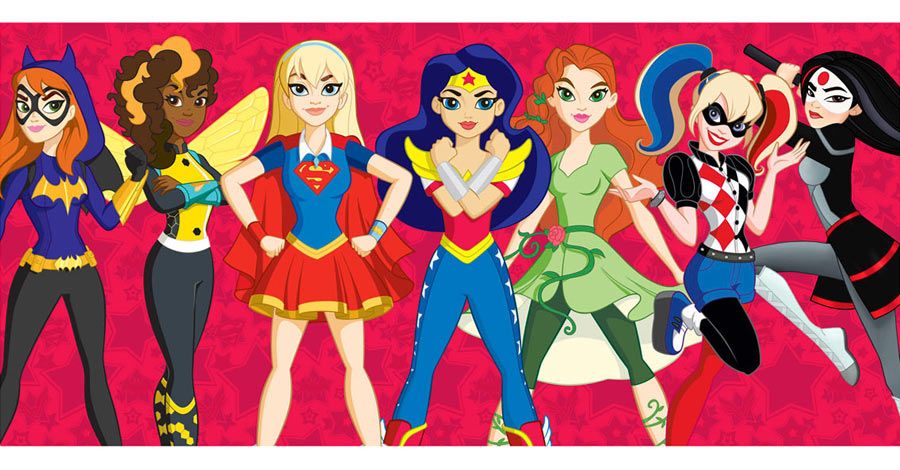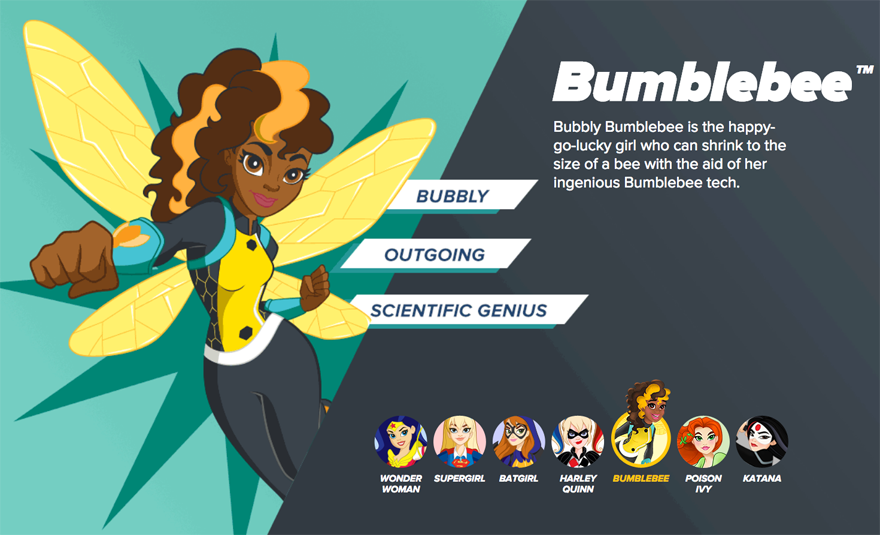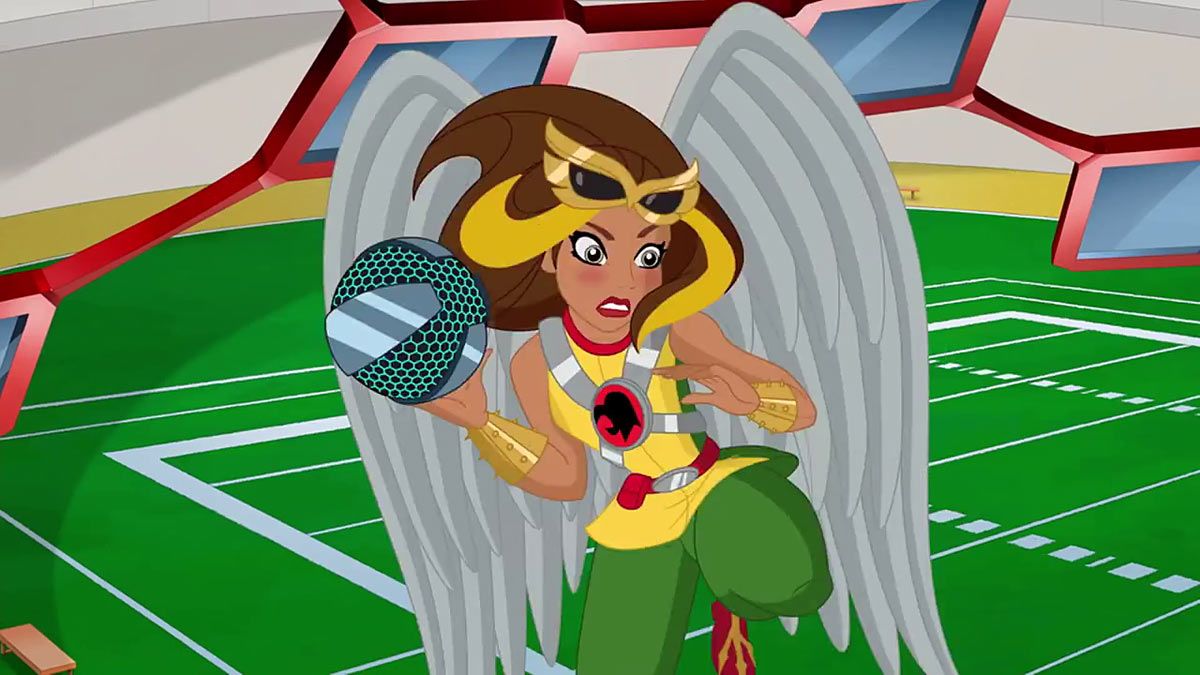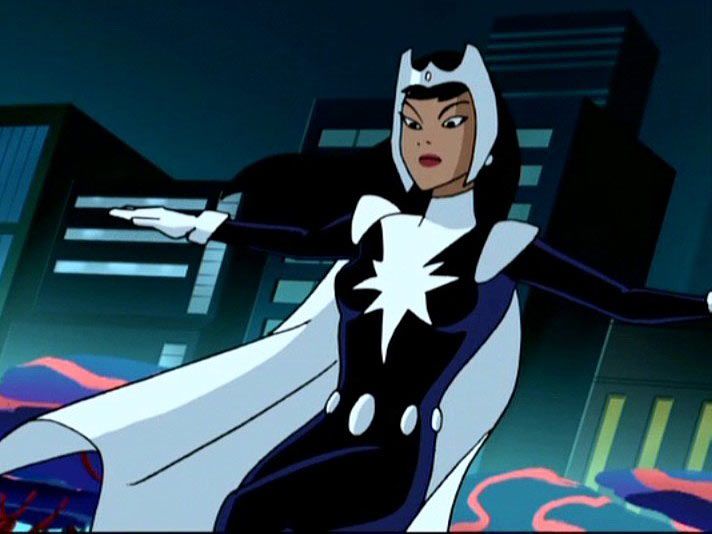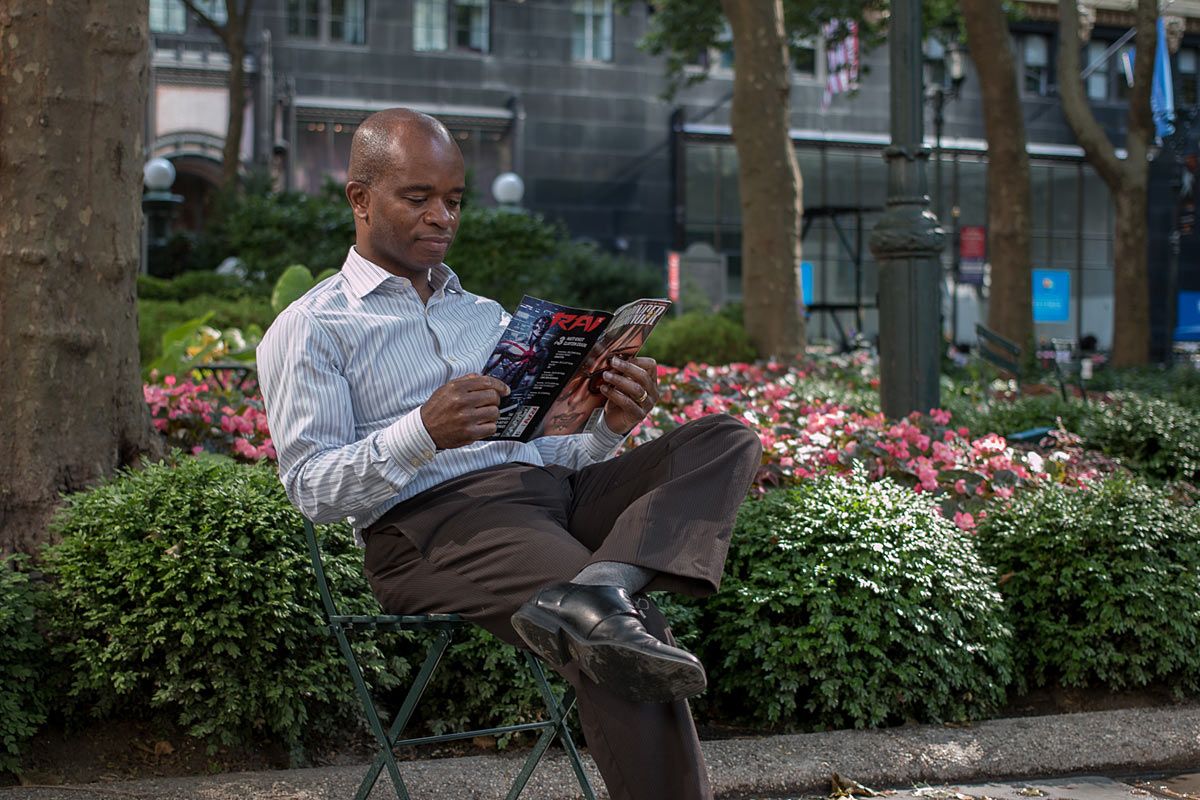Last year, DC Comics announced their "DC Super Hero Girls" initiative, a multi-pronged brand with various high-profile partners including Mattel, Random House and LEGO.
The brand features pre-teen versions of various DC Comics female superheroes, most prominently Wonder Woman and Harley Quinn. The beginning of each animated short features even more characters, including Supergirl, Batgirl, Poison Ivy, Bumblebee and Katana. Each short story tackles a theme with a good balance of humor and heart. Themes of competitiveness, empathy and individuality, among others.
I can see how this brand would help achieve the McDonald's-esque objective of getting DC Comics and their parent company, Warner Bros., a female audience for their most popular female superheroes "from the cradle to the grave."
What I don't see, beyond the most superficial and marginal, is cultural diversity and formidability among the student body.
So we have Bumblebee and Katana, a Black girl and Japanese girl, respectively. Bumblebee is the ambassador for new students at Super Hero High School, the setting for this universe. She's kind, compassionate, and flies with speed and tactical accuracy. She also shrinks to the size of a bumblebee. In Bumbebee's introduction, Wonder Woman mistook her for a flying bug and tried to smash her with her hands.
Seeing Bumblebee made me wonder something, almost instantly. Why didn't DC Comics choose Vixen?
An African girl with the powers of many animals would have been an interesting choice. Instead, they chose the girl with the power to shrink, become diminutive.
In the late 1970s, there was a cartoon called "Superstretch and Microwoman," about a married Black couple. The wife had the power to shrink. I'm trying to figure out what Black girl would want that superpower. How would it make them feel empowered, like Wonder Woman or Harley Quinn?
Maybe they watched Marvel Studios' "Ant Man" and figured they could be just as cool. Yes. That's it.
At this time, when Black girls are treated with discrimination in educational institutions, the superpower to become smaller than normal-sized makes a lot of sense. As in the '70s, as in the 21st Century.
Katana, on the other hand, wields the sword after which she is named. The kind of object you see in various films with ratings too mature for pre-teen girls to have seen. A sword, designed for killing people. Now just what is a pre-teen Katana going to do with that?
The sword connects to her heritage, but we'll never know, because Katana barely speaks. Katana never mentions that she's from Japan, or anywhere for that matter. The appearance of an Asian sword wielder in a pre-teen cartoon is also revelatory, because it shows the dearth of Asian female superheroes to choose from in the DC Comics portfolio.
They could have used Doctor Light. She would have been a girl with the power to pull off a variety of abilities and visual effects, a vehicle through which to teach girls about science, since the character is a scientist.
After that, DC Comics may have been at a loss.
Granted, Katana is high-profile, but for mature context material like "Suicide Squad" and "Arrow," so I don't consider her a good choice for pre-teen girl fare.
Silent Japanese Girl with a Sword.
As is, I'm waiting for Barbara Gordon to become Batgirl, so she can use her detective skills to find a Latina in Super Hero High School. There's Cheetah, who could be Latina, but who could also be anything, because she has fur. Hawkgirl made a cameo, but I think she's Black. She doesn't say anything, so she's furniture, anyway.
This school of superheroes must represent a grouping of cultures, of belief systems, ideas, philosophies. The introduction of Wonder Woman supports that idea. A young princess from a faraway land goes to school in America to learn about other people and traditions.
It would be interesting if the stories exploited that idea, and had girl heroes and villains from all over the world in one school, expressive of their culture and learning from each other. That would be a timely approach to the fictional premise of a girls' superhero school, and it would give a depth to the fiction. The kind of depth that would leave an impression with young girls, without hitting them over the head with a theme of cultural unity.
Education through entertainment is nothing new in American animated fare for children, and I was hoping for the same with "DC's Super Hero Girls." Because what it looks like, immediately as a visual, is a means by which to make money, and accomplish nothing else, and that's offensive.
This is exactly where the power of DC Comics must come to bear. After the home, the school is the next location in which cultural identity, examination and acceptance can be explored.
DC Comics has published stories of female superheroes for at least 75 years. Girls aren't just a demographic. The aesthetic of diversity does not equal real diversity, or good intentions. A comic book company and their parent company has succeeded in creating a brand for young girls lacking a meaningful exchange of ideas. You don't have to be a parent or a girl to get that.
If this is DC Comics' and Warner Bros. best shot at attracting and keeping a young girl audience, I don't want to see them tackle YA.
Leave it to Suzanne Collins.
Joseph Phillip Illidge is a public speaker on the subjects of race, comics and the corporate politics of diversity. In addition to his coverage by The New York Times, CNN Money, the BBC and Publishers Weekly, Joseph has been a speaker at John Jay College of Criminal Justice, Digital Book World's forum, Digitize Your Career: Marketing and Editing 2.0, Skidmore College, The School of Visual Arts, Purdue University, on the panel "Diversity in Comics: Race, Ethnicity, Gender and Sexual Orientation in American Comic Books" and at the Soho Gallery for Digital Art in New York City.
Joseph is the Head Writer for Verge Entertainment. Verge has developed an extensive library of intellectual properties for live-action and animated television and film, video games, graphic novels and web-based entertainment.
His graphic novel project, "The Ren," about the romance between a young musician from the South and a Harlem-born dancer in 1925, set against the backdrop of a crime war, will be published by First Second Books, a division of Macmillan.
Joseph's newest comic book project is the upcoming Scout Comics miniseries "Solarman," a revamp of a teenage superhero originally written by Stan Lee.

